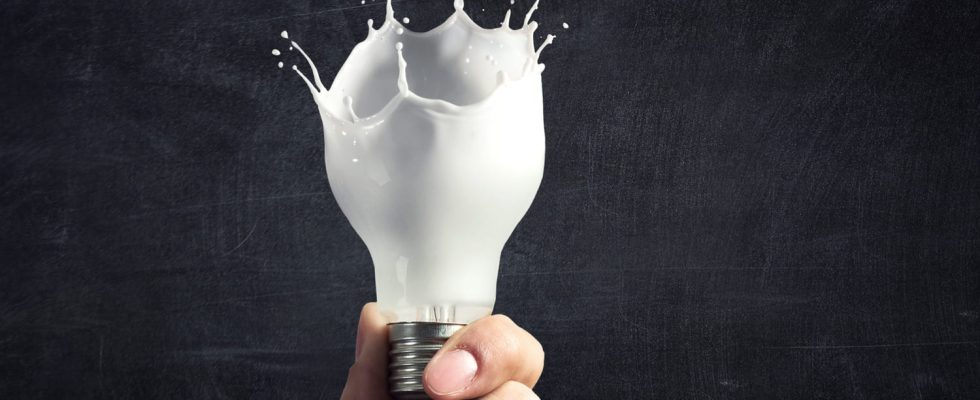There are more and more ideas for producing renewable energies. With milk, by being a little ingenious, you don’t just make cheese or yogurt.
Transforming milk into electricity or gas, yes, it’s possible! As energy costs explode and environmental issues become increasingly important, all initiatives and good ideas for producing recyclable energy should be looked at closely. And farmers and cow breeders are becoming more and more resourceful in finding practical solutions.
You may not know this, but the dairy industry generates very large quantities of “whey” each year. This product is also scientifically called “whey”. It is simply the liquid obtained during the curdling of milk, and it is what allows you to generate energy if you know how to do it.
About nine liters of whey and one kilogram of curd are obtained from ten liters of milk. The latter is composed of approximately 94% water and 4% lactose. This liquid has almost no fat, but other nutrients such as vitamins, calcium and phosphorus.
Cheesemakers have always found solutions to promote this material. Historically, whey is transformed into low-fat dairy preparations such as ricotta. It is mainly used to feed livestock. In ancient times, this product was seen as a medicine for digestion or to maintain the skin of the face.
How does milk produce energy?
In Savoie, Beaufort producers have therefore focused on a new valorization of this whey. They get their energy from it for heating. Thanks to the methanization process, this dairy waste is transformed into gas. “This gas can be used to heat water and the vats for making Beaufort,” explained Didier Simon-Chautemps, manager of the Plan Pichu mountain pasture, France 3.
At more than 2000 meters above sea level, this innovation will strengthen the energy autonomy of this company. It ensures that it reuse nearly 6,000 liters of whey per day. The liquid is sent into a large tank. Microorganisms are then injected. As they feed on the nutrients in whey, they produce gas. The gas is redirected to the boiler room “to be burned in a biogas boiler and produce hot water”.
But that’s not all: biogas is also used to run a cogenerator producing electricity. Thanks to patented methanization technology, this company purifies 99% of residues. “Part of it is returned to the natural environment in the form of purified water and organic sludge used to fertilize our pastures,” explains Savoie Lactée. As for the production of electricity, this is not trivial, we are talking about 3,000,000 kWh per year, or the equivalent of the electricity consumption of 1,500 inhabitants.
Of course, you won’t be able to replicate this at home, but this technology is easy to implement and could well inspire many dairy producers in the near future, given the price of energy which is increasing every year. year. For the Effy methanization device installer, “it is difficult to find any disadvantages to agricultural methanization! The simplicity of the biological process combined with the technicality and reliability of current equipment allow the advantages to far outweigh its few disadvantages” . However, you should know that this type of investment costs hundreds of thousands of euros.
Since 2016, the Savoie Lactée company has produced 3,000,000 kWh per year using whey. Thanks to this whey recovery cycle, the factory is entirely energy self-sufficient. It even prides itself on reselling part of its electricity at a preferential rate to EDF.
